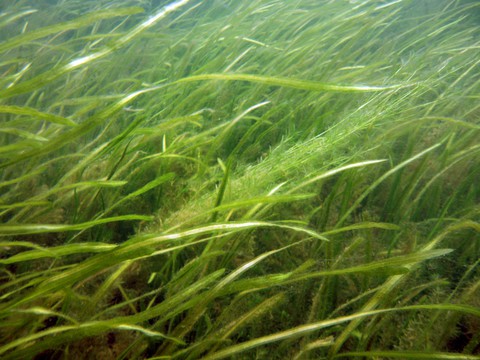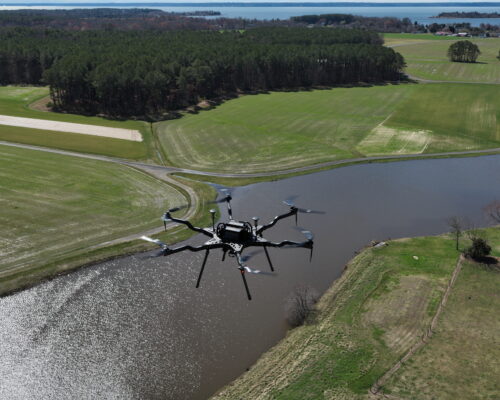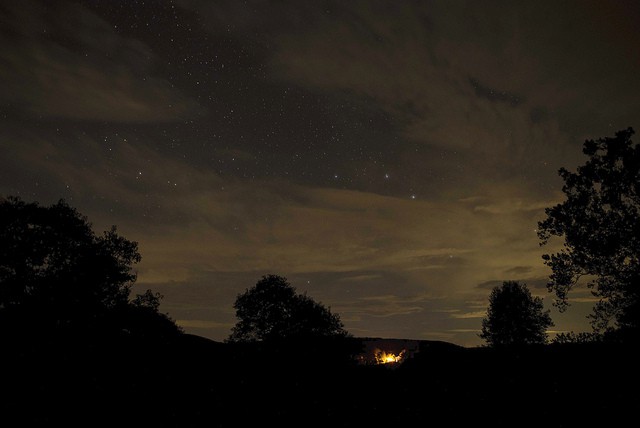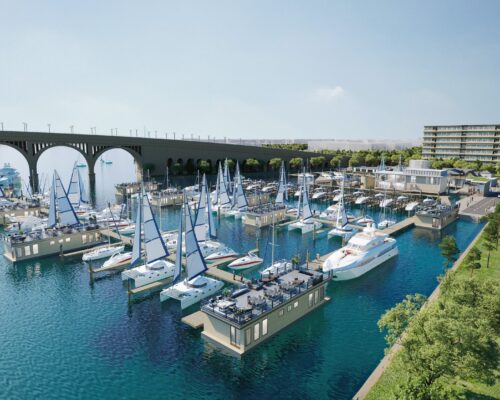We’ve long seen underwater grasses as a sign of health in the Chesapeake Bay, but they may have an additional benefit, too.
Scientists at the University of Maryland Center for Environmental Science (UMCES) have found that the comeback of submerged aquatic vegetation (SAV) is helping to remove nutrient pollution and providing habitat for baby crabs and rockfish. But the grasses may also offset the growing problem of acidification caused by climate change.
Acidification refers to the increasingly acidic pH of water in the Bay. UMCES says fossil fuels and other human-driven activities are causing higher levels of carbon dioxide in the atmosphere, and when estuarine waters like the Chesapeake absorb this additional carbon dioxide, the water gets more acidic.
It’s a problem because shellfish build their shells out of the compound calcium carbonate, and there will be less of it available as carbon dioxide levels in the water increase. That puts oyster and mussel larvae at risk, and even the growth of adult shell-formers may be more difficult.
Study coauthor Jeremy Testa, associate professor at UMCES, says SAV’s ability to buffer water against acidification is an “unanticipated benefit” of restoring SAV to manage nutrient pollution.
“Just like people take TUMS to neutralize the acids that cause heartburn, SAV beds send carbonate minerals to the lower Bay to neutralize acids there,” Testa explains.
SAV saw a bay-wide decline from the 1960s through the 1980s, and since environmentalists have been working to reduce nutrient and sediment loads that reach our waterways, underwater grasses have come back in a big way. SAV cover has increased by 300 percent form 1984 to 2015. In the Susquehanna Flats, a tidal freshwater region near the mouth of the Susquehanna River, a recovered SAV bed spans 20 square miles.
That’s where the UMCES team, along with University of Delaware graduate students and researchers and those from St. Mary’s College of Maryland, Xiamen University in China and Oregon State University, foused the new study.
They found that a strong photosynthesis by the underwater plants generates a very high pH, which helps produce calcium carbonate. The carbonate shells float downstream and dissolve into particles that reduce acidity levels by four times.
Using a model, researchers found the calcium carbonate minerals can move downstream as far as the mid-Bay before they dissolve. So, SAV beds can potentially help to make deeper Bay waters more hospitable to the organisms that form oyster and mussel shells.
To go deeper, you can read the study, “Chesapeake Bay acidification buffered by spatially decoupled carbonate mineral cycling”, published in Nature Geoscience.
-Meg Walburn Viviano




